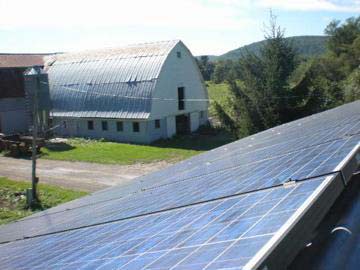Element Power Solar installing 300 MWs of PV in Chile
 Element Power Solar plans to install 300 megawatts of photovoltaics in the northern regions of Chile’s Atacama desert. The company is planning 10, 30 megawatt solar farms in the high-altitude desert. Already seven of the projects have received permits from Chile’s Servicio de Evaluacion Ambiental and expects to receive authorization for the others in coming months. The company plans to start construction on at least five of the projects this year.
Element Power Solar plans to install 300 megawatts of photovoltaics in the northern regions of Chile’s Atacama desert. The company is planning 10, 30 megawatt solar farms in the high-altitude desert. Already seven of the projects have received permits from Chile’s Servicio de Evaluacion Ambiental and expects to receive authorization for the others in coming months. The company plans to start construction on at least five of the projects this year.
As part of its projects Element Power also plans to build an interpretive and educational center to inform Chileans about the potential of solar. The center is being co-developed with SERNATUR Chile’s national tourism service, the municipality of Calama, and it will also be open to other renewable energy developers.
While Chileans are aware of solar power in the country, it’s largely used for local, off-grid use and is used by some remote tribes, said Element Power Chairman Paolo Pietrogrande. “I think it’s being used there but there’s a big gap between being used and realizing the potential of the technology,” he said.
The location of the center hasn’t been decided yet but it’s not too likely to be co-located with any of Element Power’s solar farms, according to Pietrogrande. “Most poropbaly there will be a location that is convenient [for people to visit].…Most likely the location will be close to a center where people can socialize. Our plants will be in the middle of the desert,” he said.
Element Power isn’t the only company that’s filed to install photovoltaic plants in Chile. “They have been announcing large-scale projects in Chile,” Pietrogrande said. However, “We expect to be among the first building a project.”
The arrays when completed will largely help power copper mines in the region, according to Pietrogrande. “The country Chile is one of the largest produces of copper,” he said. And the region is no exception. “Ninety percent of the local operations are industrial.” In fact, there’s about 1 million people in the region and Pietrogrande said it’s more likely to see trucks in the region than people.



